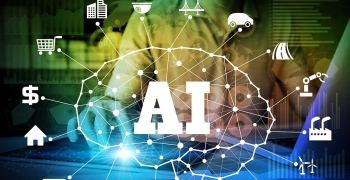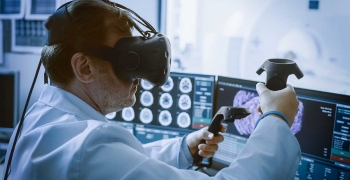If you have read Douglas Adams’s Hitchhiker’s Guide to the Galaxy while growing up, you will surely remember Deep Thought – the super intelligent computer, which was designed to come up with the “Answer to the Ultimate Question of Life, the Universe, and Everything”. While intelligent machines may have once only featured in science fiction, they constitute a pervasive reality in the 21st century. Deep learning algorithms have enabled the emergence of self-learning machines that are redefining industry standards – the global artificial intelligence (AI) market is projected to be valued at more than $16 million by 2022.
For the longest time, protocols and compliance norms like FDA regulations restricted the adoption of mobile and Cloud solutions in the life sciences and healthcare sector. But the proliferation of connected devices and AI technology has necessitated the introduction of new, and the re-haul of existing regulatory legislations.
The General Data Privacy Regulation (GDPR) is one such legislation introduced by the European Union, bringing together several data protection laws in the region. Hence, an enterprise-wide mobile strategy, which includes standard data audits must be put into motion by developers and manufacturers. This assumes more importance when it comes to sectors like life sciences and healthcare, where a huge amount of patient and scientific data is generated and collected.
Path-breaking discoveries have already been made where machine learning has been utilized to initiate far-reaching effects on the health and wellness of human beings. The MIT Lincoln Laboratory Supercomputing Center has developed a way of leveraging machine learning to rummage through large volumes of patient data, in order to come up with more personalized and focused treatments and cures. In one particular scenario, researchers at the center analyzed data collected over a period of 10 years from an intensive care unit (ICU) to generate actionable insights, in a span of time exponentially less than what traditional analytics systems would have taken.
Building a coherent data structure by consolidating systems with the help of deep learning is at the heart of developing life science technologies. CAx or computer aided automation is shaping and augmenting digital engineering to come up with functional models, prototypes and devices. Scientists at Johns Hopkins University’s Institute of Computational Medicine have developed a model of the human heart using high performance computing (HPC). The model accurately replicates various layers of the heart’s functioning, even down to cellular and molecular levels. It offers unprecedented understanding of various disease-driven dysfunctions that a human heart can suffer. With the support of this model, researchers can devise better and more effective ways to gain insights about and treat conditions like arrhythmia.
With the introduction of AI chips, the creation of convergent healthcare and life science monitoring systems will become a reality. This positions AI as the tour de force of the 21st century.
Right from the time when Watson and Cricks discovered the double helix structure of the DNA strand, mapping the human genome has become one of the most highly engaging activities in the life sciences space. Unraveling the human genome map held the key to unlock a hitherto uncharted territory – that of fundamentally understanding functions of the human physiology and by extension, the disruptions caused to it by diseases and other medical conditions. The establishment of AI-enabled deep neural networks (DNNs) has facilitated that greatly. DNNs have already led to the development of biomarkers, which can be deliberated upon to gauge the nature and extent of therapeutic interventions in human aging research.
A Canadian company has been working towards reverse engineering the genetic code to bridge what is called the “genotype-phenotype” gap – the uncertainty of genetic modifications. Each genome contains about six million letters or codes, and if one considers the number of human beings on the face of the earth, it amounts to an astronomical pool of data. Also, biology does not allow for endless and random testing. AI and deep learning thus emerge as the most apt tools to achieve such level of genetic engineering.
Once reverse engineering is achieved, it will help completely change precision medicine, genetic testing, diagnostics and the development of therapies. And then, probably, we might just have the “Answer to The Ultimate Question of Life, the Universe, and Everything.”




